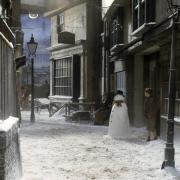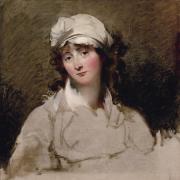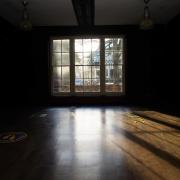Political cartoons are nothing new. Newspapers and magazines have been running satirical caricatures of public figures since publishers were able to reproduce illustrations on a news sheet. Punch, first published in 1841, was the celebrated home of the barbed political cartoon which provided a welcome commentary on the activities of the great and not-so-good.
Cartoonists were always on the side of the people – caricatures were designed to puncture the pomposity of those in power and provided a check on their ambition. They provided some very direct feedback that some of their policies and some of the personalities at the very top of government were not as beloved as they believed.
But, before the era of Punch, satirical cartoons were the preserve of the city booksellers and printshop retailers, posted in the windows of their establishments and avidly sought-after by collectors.

Brilliant draughtsmen like James Gillray and Thomas Rowaldson lampooned George III and the Prince Regent, alongside leading politicians like Charles James and Fox and William Pitt the Younger. This a world in which Sudbury’s Thomas Gainsborough also moved. Many of the same people Gainsborough was immortalising in oil on canvas were also being eviscerated in pen and ink in garret-like studios across London.
Now, the two worlds come together at Gainsborough’s House as a collection of the best James Gillray political cartoons are put on show. Entitled James Gillray: Characters in Caricature, this temporary exhibition explores the career of one of the leading satirists of his day. Gillray was renowned for exaggerating physical characteristics, not only for comic effect but also to reveal something about their character.
He also drew them consistently, so they could appear as regular characters in an ongoing storyline and people would recognise them without having to be named. For example, leading Whig politician Charles James Fox was shown as a heavy-set man with thick, bushy eyebrows and frequently was seen sporting a fox's tail.
The Gainsborough’s House exhibition has been curated by Suffolk-based art historian Tim Clayton, who last year published A Revolution in Satire, an extensive biography of Gillray which, not only examined the breadth of his career but put his incisive drawings into the context of the age, and discussed how they would have been seen by people in the street.
Speaking at the launch of the exhibition in Sudbury, Tim said: 'James Gillray was Britain’s funniest, most inventive Georgian satirist, who was more political and pointed than his friend and competitor Thomas Rowaldson, because he had a flair for great dialogue, which he included in his prints.

'Gillray came of age in the late 1770s at a time when all things English were very fashionable right across Europe. British literature, whether it be Shakespeare or Laurence Sterne’s Tristram Shandy, was all the rage and so was British art. The way the people of Europe became acquainted with contemporary art was through prints. The printing press had liberated art and disseminated it across the world.
'Gillray became the master of the print and quickly was able to harness its potential as a means of not only communication but also entertainment and in so doing created art.'
The exhibition fills Gainsborough’s House temporary exhibition space with a riot of colour as more than 100 wonderfully preserved vintage prints are displayed, encompassing the breadth of James Gillray’s extraordinary career.
Looking around the gallery, it seems as if the walls are animated, as if the images are moving, because there is so much going on. The whole exhibit is so vibrant and alive.
Tim explains: 'Gillray was largely responsible for developing the conventions of early satire and incorporated them into his own fluid style. He was one of the first professional artists to incorporate caricature portraits into more complex and ambitious satirical prints. By the 1780s, the word 'caricature’ had come to denote all satirical prints. Its practice was no longer a light-hearted amateur pastime, but a political, and often rancorous, activity.

'He made much of the rivalry between the two main political parties, the Tories led by William Pitt and the Whigs led by Charles James Fox. The royal family, the French Revolution, and the Napoleonic Wars were also rich sources of inspiration. Gillray's savagely comic caricatures exposed corruption and moral failings while mocking folly, greed and lechery.
'These themes are all very visible on the walls of this exhibition.'
His mocking of Napoleon not only shaped the British view of the French Emperor but also how he has been seen by history – certainly on this side of The Channel. But his popular series of cartoons only came about after he was threatened by the British government with the possibility of jail, following a long series of barbed scenes mocking both Fox and the King and Prince Regent.
'He faced the prospect of prosecution and prison, or he could become part of the war effort against Napoleon and drive the propaganda war, uniting the country against the French dictator. What is frequently forgotten now is that at the beginning of the war there was a lot of sympathy for the French people, and Napoleon was seen by many working class people as a charismatic leader.

'The British royal family weren’t universally popular because they were seen as extravagant and living beyond their means, and were reliant on taxes from the common people to pay for their excessive lifestyles. The French revolution was seen by many as something the British would do well to emulate.
'Gillray had been fanning the flames of this discontent with his satirical drawings, and the more popular they were, the more dangerous he became. So, in one smart move the British ruling classes managed to silence their most vocal critic while, at the same time, redirecting his energy against the nation’s enemy – the French.
'He invented ‘Little Boney’ and was chiefly responsible for the enduring British perception of Napoleon as a diminutive tyrant.'
These cartoons and caricatures were not published in newspapers but were displayed as art prints in the windows of booksellers and specialist printshops, as well as being circulated on cheap paper copies in taverns and in the immensely popular new coffee shops where the rising middle classes met and shared gossip.
In 1791, Gillray established a partnership with publisher Hannah Humphrey, a spinster with a print shop on London's fashionable Bond Street. Gillray moved in and they both lived and worked on site.
'Humphrey allowed Gillray complete creative independence. In turn, the rights to his work secured her prominence amongst West End printsellers.' Gillray’s works were not only more sophisticated than those of his rivals but, because he had a secure work space and a guarantee that the work would be published, he could respond quickly to the news of the day and produce work at great speed.

As Gillray captured the imagination of the nation he also found that the people he mocked frequently became collectors of his work.
'Gillray’s prints were aimed at an educated, wealthy audience and, at around three shillings each, they were not cheap. The Prince of Wales opened an account at Hannah Humphrey's shop in July 1803 and was a keen collector of Gillray's work. The Whig MP Charles James Fox and the dramatist Richard Brinsley Sheridan were also customers. Inclusion in a Gillray caricature became a mark of political and social success.'
Sadly, Gillray’s time in the spotlight faded during the early years of the 19th century. Not only was his health failing but his main subjects were also either dead or in exile. The mainstays of his political caricature – Fox and his arch-rival Pitt – both died in 1806. George III's dementia was publicly admitted in 1810; Gillray himself soon lost his eyesight and age hastened his decline into insanity.
Gillray was cared for by the ever-loyal Mrs Humphrey until he died on June 1 1815. He is buried in St James's churchyard, Piccadilly, and is still regarded as one of the great British political satirists of all time. Contemporary cartoonists Steve Bell and Martin Rowson acknowledge him as one of the most influential of their predecessors, the only person to match his influence was William Hogarth.
James Gillray: Characters in Caricature runs at Gainsborough’s House, Sudbury until March 10, 2024.




























